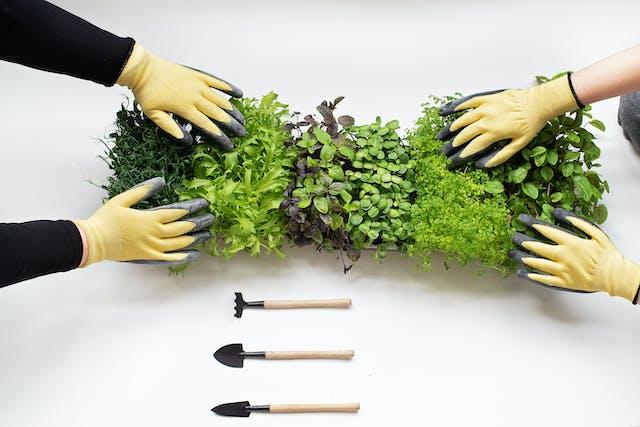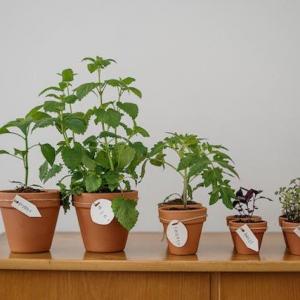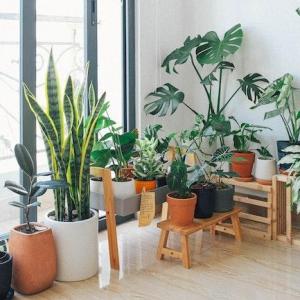
Composting:
1. Choose a composting method: There are several composting methods to choose from, including traditional backyard composting, vermicomposting (using worms), or using compost tumblers or bins. Select a method that suits your space, time, and preferences. 2. Collect compostable materials: Gather a mix of "green" and "brown" materials. Green materials are nitrogen-rich and include fruit and vegetable scraps, coffee grounds, grass clippings, and fresh plant trimmings. Brown materials are carbon-rich and include dry leaves, shredded newspaper, straw, and wood chips. Avoid meat, dairy products, and oily foods as they may attract pests. 3. Balance the compost: Aim for a balanced ratio of roughly 3 parts brown materials to 1 part green materials. This helps create an optimal environment for decomposition and prevents the compost from becoming too wet or too dry. 4. Chop or shred larger materials: Breaking down larger materials into smaller pieces accelerates the decomposition process. Use a shredder, lawnmower, or pruning shears to chop or shred items like branches, stalks, or larger leaves. 5. Layer and moisten: Layer the compostable materials, alternating between green and brown, to ensure good airflow. Moisten the pile as you go to maintain a moist but not soggy environment. Aim for a consistency similar to a damp sponge.6. Aerate and turn: Regularly turn the compost pile every few weeks using a garden fork or compost aerator. This introduces oxygen and helps even out the decomposition process. Turning also prevents odors and accelerates the breakdown of materials.
7. Patience and monitoring: Composting takes time, typically several months to a year, depending on the materials and conditions. Monitor the compost pile's moisture level and temperature. If it's too dry, add water; if it's too wet, mix in dry materials. The compost is ready when it becomes dark, crumbly, and earthy-smelling.
8. Use the compost: Once the compost is ready, use it to enrich your garden soil. Spread it as a top dressing around plants, mix it into potting mixes, or create compost tea by steeping compost in water for a nutrient-rich liquid fertilizer.
Fertilizing:
1. Understand plant nutrient needs: Different plants have varying nutrient requirements. Learn about the specific needs of the plants in your garden, including their preferences for nitrogen (N), phosphorus (P), and potassium (K), commonly represented as NPK ratios on fertilizer labels.2. Soil testing: Conduct a soil test to determine your soil's nutrient levels and pH. This helps you identify any deficiencies or imbalances that need to be addressed. Soil testing kits are available at garden centers, or you can send a sample to a lab for more detailed analysis.
3. Choose the right fertilizer: Select a fertilizer that matches your plants' needs and the results of your soil test. Fertilizers come in various forms, such as granular, liquid, or slow-release. Organic options, like compost or well-rotted manure, provide a slow-release and sustainable source of nutrients.
4. Follow application instructions: Read and follow the fertilizer's instructions carefully. Apply the recommended amount evenly around the plant's root zone, avoiding direct contact with the leaves or stems. Over-fertilizing can harm plants, so it's important to apply the right amount.
5. Timing and frequency: Fertilize plants during their active growth periods, typically in the spring and early summer. Follow a regular fertilization schedule but avoid excessive or unnecessary applications. Some plants, like vegetables or annual flowers, benefit from additional feedings throughout the growing season.
6. Watering after fertilizing: Water the plants thoroughly after applying fertilizer. This helps dissolve and distribute the nutrients into the soil, making them accessible to the plants' roots.
7. Organic alternatives: Consider using organic fertilizers or natural amendments like compost, manure, bone meal, or seaweed extracts. These options provide a slow-release of nutrients and improve soil structure and microbial activity.
8. Mulching: Apply a layer of organic mulch, such as wood chips or straw, around plants to conserve moisture, suppress weeds, and gradually release nutrients into the soil as the mulch breaks down.
Remember, moderation is key when fertilizing plants. Over-fertilization can harm plants, leach nutrients into groundwater, and negatively impact the environment. It's always best to start with a soil test and follow recommended application rates for the specific plants you're growing.
By composting effectively and fertilizing appropriately, you can create nutrient-rich soil and promote the healthy growth of your plants. These practices not only benefit your garden but also contribute to a more sustainable and environmentally friendly approach to gardening. Enjoy the process of recycling organic materials and nurturing your plants with natural and nutrient-dense amendments.
Article
Be the first comment
Elite Article














